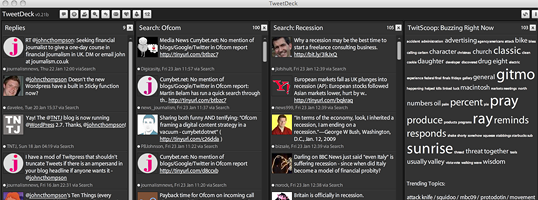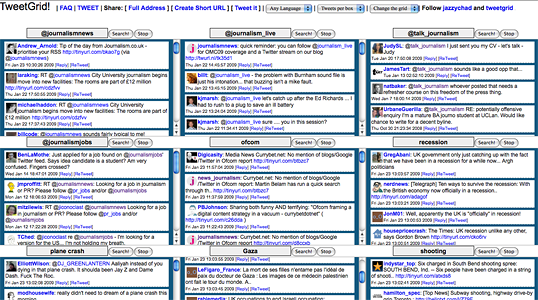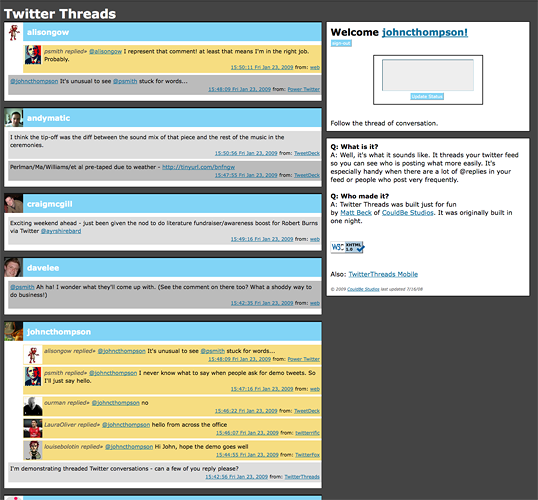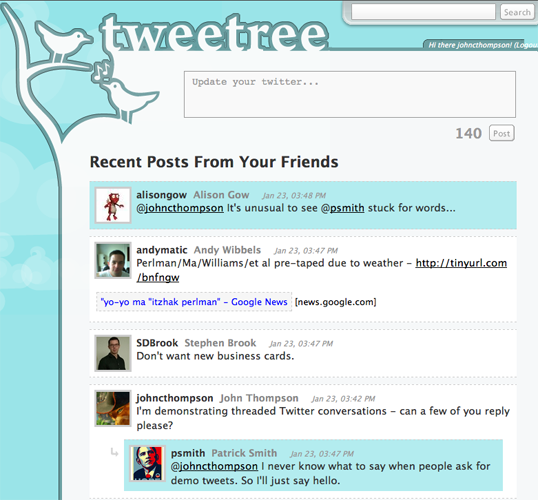Yesterday Journalism.co.uk spoke with Audioboo founder Mark Rock about the potential for the iPhone audio app to be used for local news reporting:
“[E]veryone knows what’s happening to traditional media and local newspapers are dying by the moment. But is there a very simple and easy way [for others] to start collecting audio data and using it?”
As the tool is developed – both by Audioboo’s team and third-parties once the API is released – there’s even more scope for using geotagged audio news reports.
You can see the possibilities from how it’s already being used by some Audioboo-ers:
Pie & Bovril
The Scottish Premier League site ran a trial of the app last weekend. The aim? To get ‘sound byte updates’ from fans in and around stadia, the site’s David MacDonald told Journalism.co.uk.
“Although the big clubs are well catered for of an afternoon with live commentary we felt that the smaller clubs weren’t really in a position to service the information requirements of their fans who can’t make it along for whatever reason or those ex-pats who are keen to find out what’s happening from afar on a Saturday afternoon,” explains MacDonald.
“We pick up the information via feeds from Boo which automatically populate the appropriate section of our site.”
P&B has tried updating web pages using email to text gateways and experimented with SMS updates, but these were time consuming and failed to convey the mood of fans at the game, he adds.
“It’s early days but we feel this could be a really neat, low cost way, of getting information back from around the grounds to those unable to attend. We’ll continue to grow the trial and get a few users on it and see how it goes from there,” says MacDonald.
London SE1 Community Website
James Hatts, editor of community website London SE1, published by Banksidepress said the site is also experimenting with Audioboo and has uploaded newsworthy clips, such as updates on a local fire.
“I think AudioBoo has great potential for local reporting – it’s just so easy. No waiting to get back to the office, no transcribing endless recordings, no editing, no waiting for YouTube (for example) to process your video,” says Hatts.
According to Hatts, the ‘idiot-proof brilliance’ of the app is comparable to using a Flip camera and could make it an important part of a modern reporter’s kit.
However, using it in a way that makes economic sense is a key consideration for Bankside:
“It’s early days for Audioboo but at the moment there’s no way to drive traffic to our own site from a boo page, for instance,” explains Hatts.
“There are interesting future possibilities for using voice recognition software to display contextual adverts around the audio player (or even to insert relevant audio adverts).
“At the moment it’s great for novelty value and building an audience and building a brand, but even an operation like ours which is run on a shoestring needs to be able to derive some revenue from our content.”
Our Man Inside
Rock said Audioboo should be used to augment other reporting and that audio was an emotive medium – both ideas that seem to have been taken on board by ‘social media mongrel’ Christian Payne in his use of the app.
“[W]hile i experiment, I have fallen back in love with audio. It makes you think more about how you describe your surroundings. It makes me want my surroundings to explain themselves. Either by getting close to a person and their opinion or close to environmental sounds,” he writes in a blog post.
“Combined with a photo attached to act as a catalyst for the imagination, the listener is not being force fed the story. They have to take a moment to let their imagination get involved in the media.”








 For example – the Enterprise API was trialled by the Washington Post to create
For example – the Enterprise API was trialled by the Washington Post to create